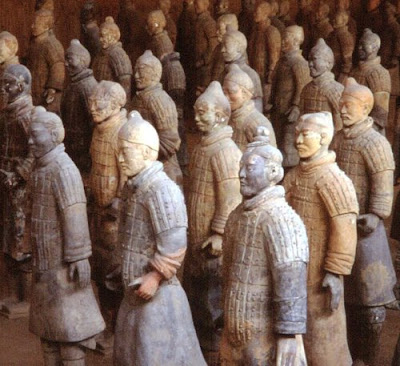
An important step toward clarifying ancient “religious specialists” is occurring and should provide archaeologists with a more consistent framework in defining a “shaman” versus a “priest.”
The Signs of the Sacred: Identifying Shamans Using Archaeological Evidence by Christine VanPool is being published in the upcoming Journal of Anthropological Archaeology, and the article is discussed in Kris Hirst’s About.com archaeology blog.
According to Hirst, quoting VanPool, religious specialists are people in a given society who have a connection to the deities who control things humans cannot.
“Religious specialists are classed by dry-as-dust archaeologists as ‘craft specialists’, and the presence of craft specialists ~ people with assigned part-time or fulltime jobs including crop tending and child care and pot making and flint knapping and tending to the religious needs of a society ~ is one of those characteristics of complex societies that anthropologists (and archaeologists) use to discuss how people organize themselves,” Hirst writes.
Definitions of the two major religious specialists, based on VanPool’s paper, are:

- A shaman is a type of religious specialist who uses altered states of consciousness to directly interact with gods and supernatural agents. Shamans are usually part time practitioners, who are part supernatural beings, at least some of the time. Shamans are generally associated with hunter-gatherer level societies. Shamans have special fetishes and their iconography (the symbols they use) include liminal creatures—creatures that are part-human, part-god, and/or part-animal; creatures that like the shaman him or herself are part in the mundane world, part in the otherwise inaccessible world of the gods.
- A priest, in the anthropological sense, is a full-time religious specialist who acts as a representative for a society's deity or deities. Priests are generally associated with societies that have attained at least the complexity associated with regular agriculture. Priests perform regular or cyclical rituals that ease the supernatural relationship between human and god. Unlike shamans, they don't typically address issues between individuals and deities, but rather speak as a mediator between the entire society and the gods which rule the earth.

The two categories are created by archaeologists and anthropologists, and are not mutually exclusive in real-life applications ~ you can have both types of specialists in a given society.
“Some societies have shaman-priests who combine traits of both,” Hirst writes. “Further, many native religions were greatly impacted by colonization and missionaries, creating a great loss of diversity; but colonization, agricultural complexity and even urbanization does not necessarily entail a complete shift away from shamanism.”
Click here for Kris Hirst’s post.Click here for VanPool’s original article, which requires purchase. Photos are late 1800s portraits of shamans, mostly Siberian.































